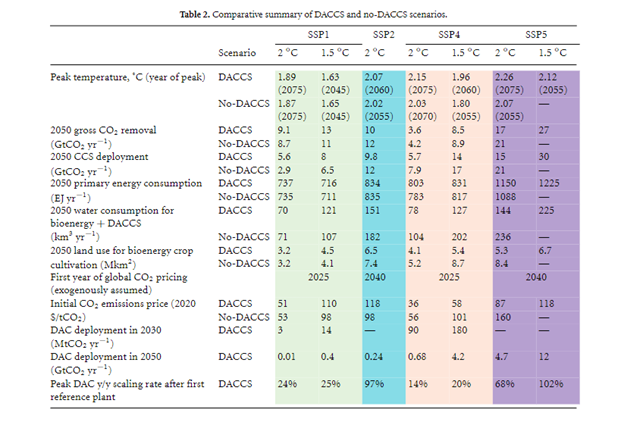The Role of Direct Air Capture and Negative Emissions Technologies
This article assesses direct air capture with carbon storage (DACCS) use relative to other carbon capture methods and examines its side effects for global energy, water, and land systems. The research indicates that even under conservative assumptions of its future cost and energy efficiency improvements, DACCS could play a large role in mitigation and reduce the biggest tradeoffs of land and water negative emissions deployments across multiple Shared Socioeconomic Pathways (SSPs).

If we assume CO2 emissions pricing begins within the next five years and rises over time to limit end-of-century warming to well below 2˚C, DACCS deployment could reach several to hundreds of MtCO2-scales globally by the year 2030. DACCS availability could reduce initial CO2 emissions prices by up to 60%. However, its energy requirement for natural gas process heat alone could reach up to 25% of present-day global primary energy consumption later in the century. Given the emerging importance of DACCS to environmental policy, we propose that the integrated assessment modelling community add this technology to their models so that the risks and benefits of DACCS can be better understood.
For the full study, download the file below.


